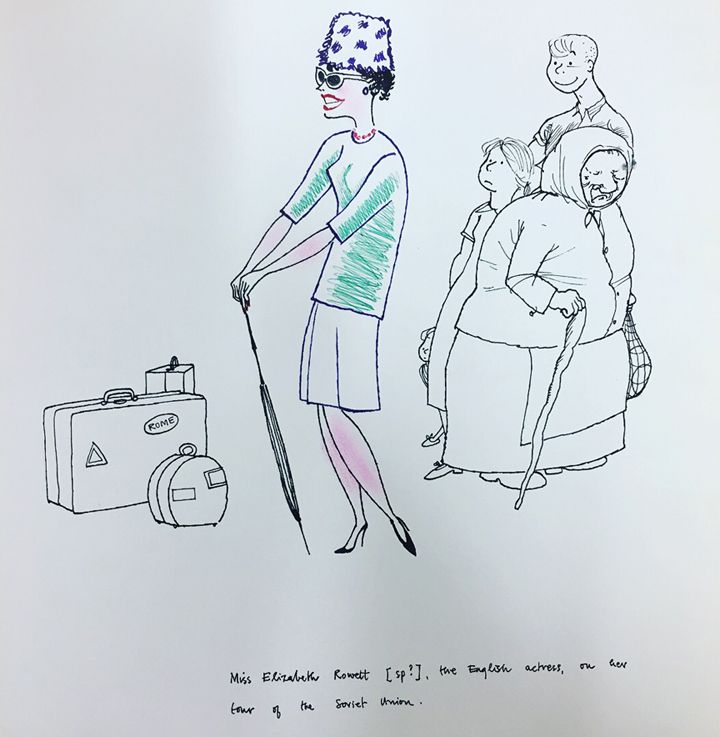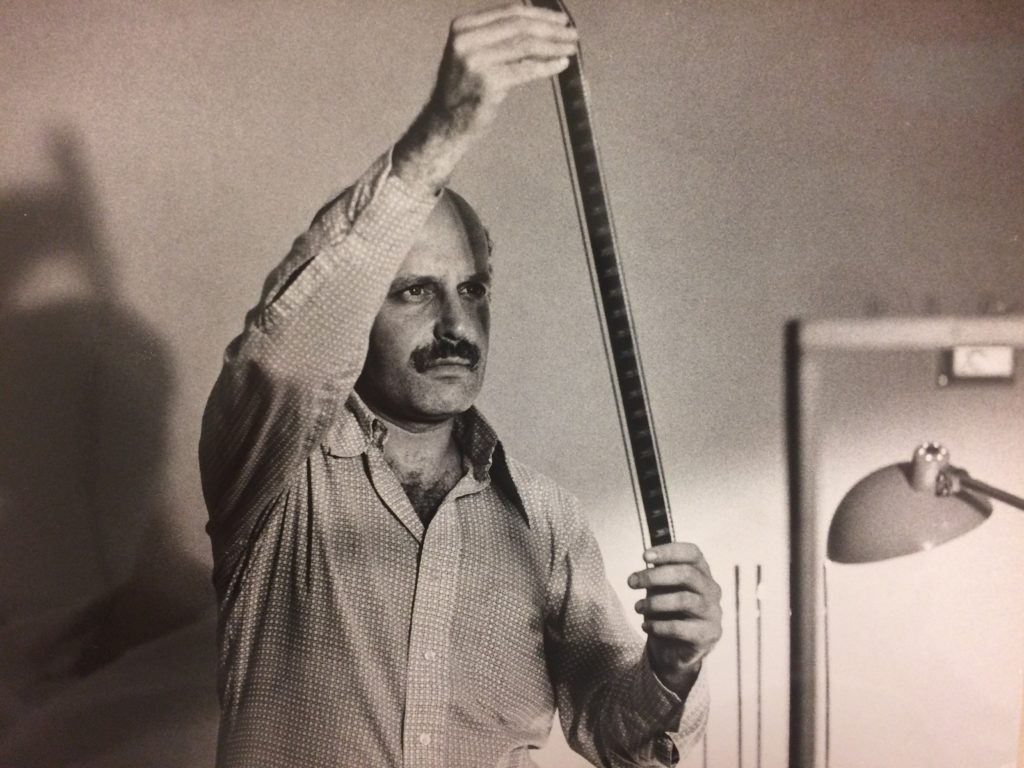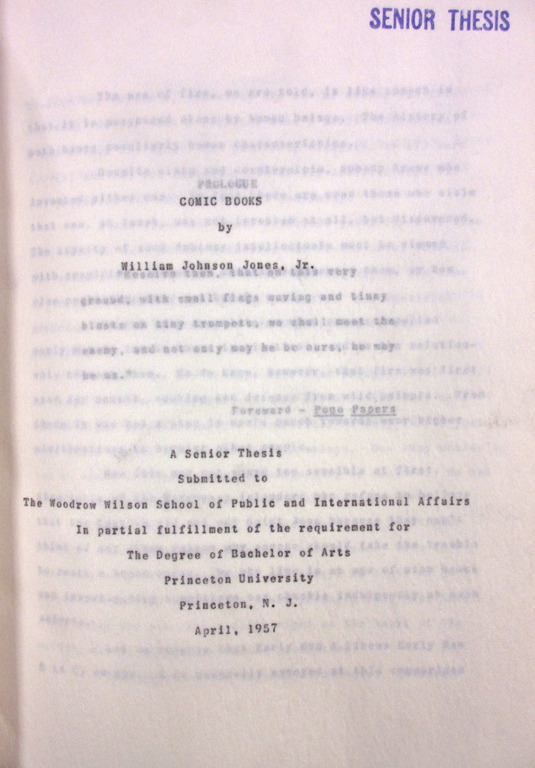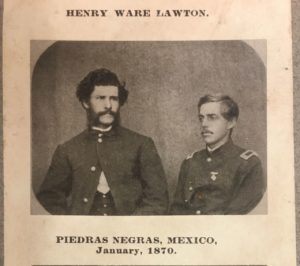New finding aids include the following:
360 Photographs of American Scenery Collected by Norman Selfe on the Spots Represented in 1884 (C1573)
Consists of a photograph album containing over 300 photographs of urban and rural locations in North America, Hawaii, and New Zealand, collected by Australian engineer Norman Selfe (1839-1911) during his 1884 tour to inspect engineering and architectural works abroad. The photographs document street architecture in San Francisco, California; redwood logging ventures in Humboldt County, California; as well as locations in the Oregon, Washington, and Utah Territories; the states of Colorado, Nevada, Missouri, Illinois, New York, New Hampshire, and Massachusetts; federal buildings in Washington, D.C.; and cities and natural features in Canada, including British Columbia, Montreal, Toronto, Niagara Falls, and the St. Lawrence River. Includes photographs taken by William Henry Jackson (1843-1942), George Dobson Valentine (1852-1890), George Fiske (1835-1918), I. W. Taber (1830-1912), and others.
Ballet Folklórico de Princeton Records (AC462)
Consists of images and videos from Ballet Folklórico de Princeton performances from 2006‐2013. The images, videos, and ephemera were used by the organization for rehearsal, promotional purposes, and alumni relations.
Blair Family Papers (C1569)
Consists of a group of family papers and genealogical research collected by members of the Blair family, a prominent political family in the United States in the 19th century. Materials relate to Francis Preston Blair Sr. (1791-1876) and his descendents, including Frank P. (Francis Preston) Blair Jr., Apolline Alexander Blair, Francis Preston Blair III, Andrew A. Blair, James L. Blair, Gist Blair, Emily Blair Henrotin, and others. Included are correspondence, documents, genealogical research, photographs, printed materials, and writings related to politics, military service, family history, and domestic life.
Captain John Matthews Papers (C1575)
Consists of papers of Captain John Matthews (d. 1798), a British naval officer involved in the transatlantic commerce in enslaved Africans in Sierra Leone in the 1780s and 1790s. Four detailed journals document Matthews’s employment as an agent for the African Company of Merchants between 1785 and 1787; as captain of the HMS Vulcan and the HMS Courageux in the Mediterranean Sea during the 1793 campaigns of the French Revolutionary Wars; and as captain of the HMS Maidstone, a British patrol ship monitoring trade in Sierra Leone and the Caribbean in 1797 and 1798. Also present are watercolor illustrations of colonial forts along the West African coast and several personal and family documents of John Matthews, including an anti-abolitionist deposition Matthews gave regarding the slave trade.
Description de la Côte Occidentale D’Afrique depuis le Cap Spartel juqu’au Cap Bojador (Q-000233)
A very descriptive report, dating from circa 1800, that provides extensive observations of the geography of the west coast of Africa and near-by islands. Written by an experienced navigator as a navigation guide for others, it gives detailed descriptions of the African coast between Cape Spartel (near Tangiers) to Cape Bojador (Western Sahara) as well as Madeira and the Canary Islands. The report includes details about latitudes, longitudes, distances, routes, anchorages, hidden rocks, tides, currents and descriptions of visible ports and villages.
Doubleday & Company File of Louis Kronenberger Correspondence (C1579)
Consists primarily of letters, most of which date from the 1970s, from critic, novelist, and biographer Louis Kronenberger to his editors at Doubleday & Company.
Edgardo Cozarinsky Papers (C1532)
Edgardo Cozarinsky is an Argentine-born film director, producer, screenwriter, novelist, critic, theater director, and playwright. A large portion of the papers include scripts, shooting schedules, printed press, on set photographic stills, subtitle translation texts, audiovisual materials, general reference, and accounting files pertaining to Cozarinsky’s film work. Drafts and printed materials of his theater productions and writing publications are present as well. Correspondence from various friends and collaborators including Néstor Almendros, Adolfo Bioy Casares, Guillermo Cabrera Infante, Ronald Christ, Frances Korn, Silvina and Victoria Ocampo, Alejandra Pizarnik, Manuel Puig, Severo Sarduy, Susan Sontag, and Julián Ríos, among other individuals, is also present.
HF Bar Ranch Photograph Albums (C1574)
Consists of two photograph albums containing photographs taken on and around the HF Bar Ranch in Johnson County, Wyoming, in 1918. One album depicts ranchers and cowboys engaged in cattle and horse wrangling, dehorning, branding, and herding. The other documents a group of visitors, including many women travelers, participating in a camping trip on horseback through the foothills of the Bighorn Mountains. Photographs of Frank O. Horton (1880–1948), the founder and owner of the ranch, are included.
Idea Vilariño Papers (C1567)
Idea Vilariño was a poet, literary critic, song composer, translator, and educator. Her papers contain handwritten and typewritten drafts and proofs of her poetry; correspondence with her siblings Numen, Poema, Azul, and Alma; personal family photographs; research notebooks; and an annotated collection of books on literary criticism, Shakespeare, Homer, Rubén Darío, and others.
J. Arthur Hutton Angling Notebooks (C1570)
Consists of two notebooks or scrapbooks dating from 1886 to 1891 kept by noted English angler, J. Arthur Hutton that include a series of essays read before the Manchester Anglers’ Association and monthly entries of descriptions of fishing flies.
James Geddes Family Correspondence (C1572)
Consists of family correspondence of Scottish American surveyor, civil engineer, salt manufacturer, judge, and politician James Geddes (1763-1838) who settled along Onondaga Lake in New York in the 1790s, along with a detailed list of his expenses related to a 1804 land survey of locations in Onondaga, Cayuga, Oneida, and Oswego counties in New York. Geddes’s correspondence, which mostly dates from the 1820s and 1830s, pertains to his engineering and surveying work, politics, family matters, and other topics, and includes detailed observations he recorded on local weather patterns, plant life, and topography.
James P. Kimball Papers (C1438)
Consists of a variety of materials, including photographs, correspondence, reports, and ephemera, related to James P. Kimball’s life and work as a geologist and engineer around the turn of the 20th century, primarily in the American West.
John Ennis Papers (C1563)
Consists of writings, editorial files, correspondence, teaching materials, and other professional working files of Irish poet John Ennis (1944- ), including drafts of his published poetry and unpublished work from the late 1960s through 2016, editorial files related to anthologies of Irish and Canadian poetry he edited between 2002 and 2009, and materials documenting the activities of the Irish arts organization Poetry Ireland and its journal Poetry Ireland Review from its inception in 1978 through the 1990s.
Marquis Astolphe de Custine Letters to Comtesse Merlin (C1577)
Consists of 273 letters, dating from 1836 to 1855, most of which are from French aristocrat, writer, and socialite Marquis Astolphe de Custine to his close friend, María de las Mercedes Santa Cruz y Montalvo, comtesse de Merlin. Reflecting on a myriad of topics, Custine’s letters offer insight into the political, intellectual, social, and cultural happenings in Europe during a time of great change while also providing insight into his own character.
Murray S. Peyton Collection of Princeton Track and Field Materials (AC460)
Consists of rosters, meet schedules, programs, scorecards, results, clippings, press releases, meet program magazines, and other published materials related to Princeton and Ivy League track & field and cross country. The collection was assembled and organized by Murray S. Peyton (’57) over 50 years.
N. Belen intelligence report on revolutionary activities in Iran (Q-000271)
Intelligence report manuscript prepared by Turkish official N. Belen, which documents political developments in Iran, particularly revolutionary activities, from 1914 to 1926. Includes 3 maps and numerous photographs of individuals, groups, events, and landscapes, as well as some handwritten annotations.
Princeton University Department of Near Eastern Studies Faculty Research Materials (C1568)
Consists of research materials of faculty members of Princeton University’s Department of Near Eastern Studies, most likely Philip Khuri Hitti (1886-1978) and/or his son-in-law, R. Bayly Winder (1920-1988). Materials include photocopied materials relating to Jurji Zaydan (Georgie Zeidan) (1861-1914), and Aramco records, primarily Arabian Research Division, Government Relations Division translations of Current Affairs Radio Broadcasts from 1954 to 1956.
New additions to existing collections were added to the following finding aids:
Frederic Dennis Papers on Sylvia Beach (C1540)
The donor of this collection recently gave an additional number of photographs of Sylvia Beach, friends, and family ranging from 1890 to 1941, as well as correspondence, clippings, and other miscellaneous documents. Of special interest is a letter from Sylvia to her father (dated July 18 1930) in which she discusses author James Joyce and his vision problems.
General Manuscripts Miscellaneous Collection (C0140)
A recent addition to this open collection of business and personal letters, manuscripts, drawings, photographs, and official documents consists of a group of correspondence, dating from 1975 to 1978, between British literary critic Frank Kermode (1919-2010) and Viking editor Elisabeth Sifton regarding the Fontana Modern Masters series.
M. L. Parrish Collection of Victorian Novelists (C0171)
A recent addition to this collection, consisting of the library of books, manuscripts, photographs, artwork, and ephemera as originally collected by Morris Longstreth Parrish and subsequently added to by Princeton University Library, includes letters from Charles Dickens (1837-1896) to The Lecture Agency, Ltd., dating from 1891 to 1893, regarding North American lecture tours.
Princeton University Collection of Logan Pearsall Smith Materials (C0293)
An open collection consisting of selected papers of American-born British essayist and critic Logan Pearsall Smith. Recent additions include correspondence with his sisters, Alys Russell and Mary Berenson, dating from 1921 to 1930, as well as a letter from Edmund Gosse and one from Beatrice Webb.
Princeton University Library Collection of American Revolution Materials (C1284)
A recent addition to this open collection, which consists of selected correspondence, documents, and other materials related to the U.S. Continental Congress and the American Revolutionary War era, is a 1783 pay receipt for a deceased Revolutionary War soldier, Thomas Brown, who was likely African American.
Princeton University Library Collection of John Maclean Family Materials (C0342)
This open collection consists of selected personal and family papers of John Maclean (1771-1814), Princeton’s first professor of chemistry. Recent additions include correspondence of Archibald Maclean (1810-1894), William Bainbridge (1774-1833), and other family members, as well as a genealogy of the Maclean, Bainbridge, and Taylor families.
Princeton University Library Collection of Western Americana Miscellaneous Manuscripts (C1446)
Recent additions to this open collection of miscellaneous source material pertaining to the history of the American West and Southwest include two letters from San Diego settler and entrepreneur George T. Williams to his father in Boston (1851); and a four-page letter from A. M. Ferguson (Mrs. Yates Ferguson), a California settler and wife of a gold miner living in Greenwood Valley, El Dorado County, California, to her sister Miss G. E. Wilson in Westchester County, New York (1855).
Princeton University Library Collection of Western Americana Photographs (WC064)
A recent addition to this open collection of photographs of the American West consists of a half-plate daguerreotype depicting a mining scene during the California gold rush, circa 1850s.
Robert H. Taylor Collection of English and American Literature (RTC01)
The Robert H. Taylor Collection consists of over 4,000 rare books and 3,300 manuscripts illustrating in their wide range the scope of English literature from the fourteenth century to the 1940s. A recent manuscript addition consists of three letters between J. Ratcliffe and J. Joplin and journalist William Robertson Nicoll (1851-1923) regarding the Brontë family. Ratcliffe and Joplin were family members of Martha Brown (1828-1880), who worked as a servant to Charlotte Brontë and her husband, Arthur Bell Nicholls.
William Michael Rossetti Collection (C0223)
A recent addition to this open collection of manuscripts, correspondence, and miscellanea of the English art critic and essayist William Michael Rossetti (1829-1919) is a three-page letter, dated January 15th, 1889, from William Michael Rossetti to Hall Caine regarding sonnets.









